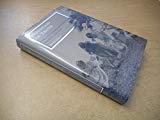
Mountain of Truth: The Counterculture Begins, Ascona 1900-1920 PDF
287 Pages·1986·23.6497 MB·other
Most books are stored in the elastic cloud where traffic is expensive. For this reason, we have a limit on daily download.
Preview Mountain of Truth: The Counterculture Begins, Ascona 1900-1920
Description:
"In 1900 a group of disaffected intellectuals, preoccupied with their own unhappiness in a rapidly industrializing Europe, built the Nature Cure Sanatorium on a small hill outside the tiny Swiss fishing village of Ascona. Soon others joined them, erecting ramshackle cabins and villas on the hill, which they called "Monte Verita," the Mountain of Truth. During the next twenty years Ascona became the place for many of Europe's spiritual rebels to visit, including D. H. Lawrence, Hermann Hesse, C. G. Jung, Rudolf von Laban, Isadora Duncan, Paul Tillich, and Mary Wigman. Seeking an alternative to the "iron cage" of European civilization, they embraced anarchism, pacificism, feminism, psychoanalysis, and nature worship, and developed new art forms, including Modern Dance, Dadaism, and Surrealism. Although their idealistic pursuit of the alternative life eventually was interrupted by the reality engulfing Europe, the ideas that emerged from Ascona lived on to inspire later counterculture movements and art forms. In this first thorough account in English of life in Ascona, its remarkable inhabitants, and their counterculture experiments, Martin Green approached the Mountain of Truth from three perspectives. First, he describes the lives of the three most interesting and representative Asconans: Otto Gross, Gusto Graser, and Rudolf von Laban. He then surveys the whole phenomenon of Ascona, showing who was there at different times and how their variety of interests and enterprises led them to invent a new religions, ethics, psychology, diet, art, and above all new relations between men and women. Finally, he examines the ideas developed at Ascona at their later influence on arts, culture, and politics. In particular, Green relates the counterculture in Ascona to the Gandhian movement in India nd the 1960s counterculture in America.
See more
The list of books you might like
Most books are stored in the elastic cloud where traffic is expensive. For this reason, we have a limit on daily download.
